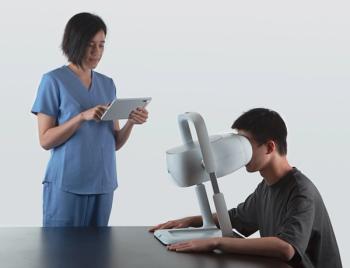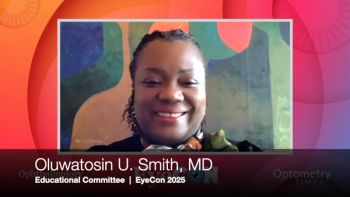
News


The study will be evaluating the safety, tolerability, and efficacy of QLS-111 in adult patients with normal tension glaucoma.


Innovation, adaptability, and clear communication are key to managing outcomes.

In episode 1, Bill Trattler, MD, shares practical advice on documentation, patient communication, keratoconus management, and advanced lens technology.

Surgeons navigate unpredictable healing and anatomy with customized strategies.



Kriya is developing gene therapies targeting chronic diseases such as geographic atrophy, trigeminal neuralgia, and type 1 diabetes.


Opioids like fentanyl effectively prevent sneezing during propofol sedation for periocular injections, enhancing patient safety in ophthalmic procedures.


Understand the anatomical risks, technique-specific benefits, and patient selection criteria

Alcon showcases new data at APACRS 2025, emphasizing advancements in IOL technology and surgical precision for improved patient outcomes.

Advanz Pharma and Alvotech announced AVT06, a biosimilar to Eylea, was approved for neovascular age-related macular degeneration

NCX 470 met the primary endpoint of non-inferiority in lowering intraocular pressure (IOP) from baseline compared to the standard of care, latanoprost 0.005%.

Included is the supplemental Biologics License Application (sBLA) for EYLEA HD seeking approval for both the treatment of macular edema following retinal vein occlusion (RVO) and the broadening of the dosing schedule to include every 4-week dosing across approved indications.



Advances address a need for the growing populace with age-related near vision loss.

Dan Ignaszewski explains how the national advocacy campaign aims to unite patients, researchers, and clinicians to protect NEI’s independence and ensure vision research funding.

The company previously provided an update in April 2025 stating its intention to lay off approximately 65% of the company after the COAST trial failed to meet its primary end point.

Best disease, or vitelliform macular dystrophy, is a rare, inherited retinal condition causing macular degeneration by mutations in the BEST1 gene, leading to progressive vision loss and, in some cases, blindness.

Fovea-sparing, multifocal, and bilateral lesions exhibited the fastest growth rates.


Omer Trivizki discusses promising results of VOY-101, a gene therapy for geographic atrophy, highlighting safety and next steps in ongoing research.

jCyte initiates patient dosing in a new trial for famzeretcel, aiming to transform treatment options for retinitis pigmentosa.

Extend the summer at EyeCon 2025—where clinical insight meets coastal vibes—September 26 and 27 at the Margaritaville Hollywood Beach Resort in Florida.

The two aim to develop a potential first-in-class melanocortin receptor-targeted treatment for patients with retinal diseases.

RAMQ is a public organization introduced in 1970, following the adoption of the universal health care system in Canada.




.png)


